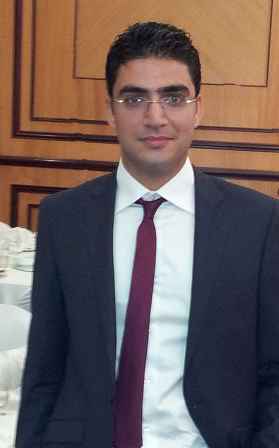|
||

|
||
A Message from the Director, Jian-Ping WangWelcome everyone, to the C-SPIN Quarterly Newsletter. C-SPIN is in its fifth and final year. I am very pleased with the many exciting results, outstanding publications, and crucial patent applications in the past 4+ years. Many of the “unexpected” outcomes arose from team efforts across multiple universities, which shows that the cross-disciplinary, multi-institutional vision of C-SPIN really does make the whole greater than the sum of its parts – and, based on SCI citations and the number of invited talks at major conferences, something that is essential for future spintronics research.I am also very pleased with the connections that PIs, post-docs, and graduate students have made with our sponsors. We won’t know final numbers for a few months, but I think we’ll all be pleased with the number of C-SPIN graduates who have been employed by our sponsors. Some of our students and postdoctoral fellows have become professors, which means that C-SPIN ideas will continue to be developed in academia. Finally, I am highly pleased that original C-SPIN research has developed into many other research programs that involve our PIs, including some recent DARPA and DoD MURI programs. Congratulations to those PIs, and thanks to our sponsors for their ongoing support, vision, and patience. For this issue, I asked Mike Lotti to chronicle Theme 2, the spin channel and interfaces theme. Roland Kawakami and Paul Crowell have done an excellent job to coordinating a world-leading unique research theme that resulted in many new and exciting discoveries in the past four years. We are really happy to see Marie Rahne back in the office after the birth of her daughter in January. Thanks to Mike and Marie again for preparing this issue of the newsletter. |
||
Looking Back, Looking Ahead: Theme 2All-spin logic is an incredibly promising advance that will revolutionize computing technology. Or perhaps, all-spin logic is a pipe dream. Or maybe it’s somewhere in between – which is another way of saying that the pursuit of all-spin logic will likely introduce important new technology to the world. Such a conviction has been at the heart of Theme 2 from the beginning. All-spin logic – and other real and speculative spintronic technology – relies on ultra-low energy transport of spin from one place to another. In other words, it relies on an efficient spin channel. Back in 2012, when the original C-SPIN proposal was being written, only basic demonstrations of spin transport had occurred, and nearly all of what was recorded was not well-understood. Unlike spin-based memory, which relied on technology that had actually been developed into devices (like MTJs), all-spin logic research was almost exclusively at the “fundamental science” or “materials development” phase. No scalable materials had been developed, and no devices had been made or tested. In fact, most known spin channel materials were considered “exotic” and only worked below room temperature. Read More. |
||
Flipping a Magnetic Memory Cell with a Light PulseC-SPIN reserachers have created a magnetic tunnel junction (MTJ) that can be switched by a pulse of light lasting one trillionth of a second, setting a speed record. The magnetic tunnel junction is a device critical to information technology with the termination of Moore’s law, a principle that has ruled the microelectronics industry for five decades. This advancement holds promise for the development of new, optically controlled, ultrafast magnetic devices collectively called spintronics (electronics that combine optical and magnetic nanotechnologies). These devices could lead to innovations in the storage, processing, and communication of information in the coming decade. An example of such innovation would be the development of a system that like the human brain, can both store and analyze a large amount of data simultaneously. The details of the device and the tests conducted on it are reported in the paper “All-optical switching of magnetic tunnel junctions with single sub-picosecond laser pulses,” published on Feb. 28 in the journal Physical Review Applied. Read More. |
||
Save the Date for the 2017 Annual ReviewThe 2017 C-SPIN Annual Review will be held in Minenaplis on September 27th and 28th. Registration will be announced in the coming weeks. We are looking forward to seeing you in Minneapolis once again! |
||
Post-Doc & Student ProfilesGordon SteckleinPhD Candidate, University of Minnesota
I am working on spin transport through graphene/ferromagnet interfaces, which is a project in Theme 2. The goal is to understand how the materials and electrical resistance of these interfaces affect our ability to both inject spins from a ferromagnet into graphene and absorb spins from graphene into a ferromagnet. Nonlocal graphene spin valves are an ideal system for electrostatically gating spin currents, which could be useful for switching magnetizations by spin-transfer torque and spin-based neuromorphic computing. I am also interested in graphene grown by chemical vapor deposition. Historically, this growth method, which produces larger area graphene than exfoliated techniques, results in films with reduced mobility. I have four publications to my credit and two underway with fellow C-SPIN researchers Walid Amamou and Yoska Anugrah. Read more. 
Walid AmamouPostdoctoral Reseacher, The Ohio State UniversityI am working on achieving non-local magnetization switching of a nanomagnet deposited on graphene. The role of the graphene here is to carry spin current to the nanomagnet in order to switch its magnetization by spin transfer torque (STT). Graphene is an excellent spin conductor with a spin diffusion length up to 30 μm and is therefore an ideal platform for achieving magnetization switching. In collaboration with the Crowell and Koester groups, we discovered that the spin current is significantly reduced and relaxed at the nanomagnet/graphene interface before getting absorbed to the bulk of the nanomagnet and converted to useful STT. While this might seem like a bad news for graphene, we discovered that by inserting a Cu spacer between the ferromagnet and graphene, we could strongly reduce this interfacial spin relaxation effect and observe bulk spin absorption that is essential for achieving magnetization switching. This work is in Theme 2 and is of particular importance for achieving viable All-Spin Logic devices which heavily rely on non-local magnetization switching. Read more. |
